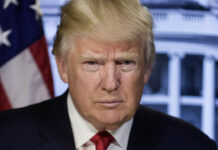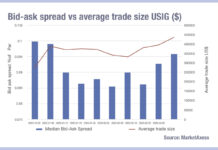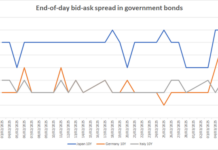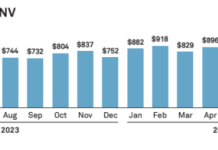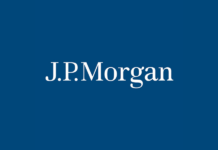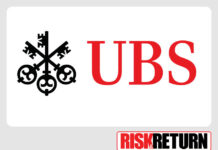The street is waiting anxiously for the announcement and impact of all the trade tariffs to be announced on ‘Liberation Day’; the term the Trump administration applies to the planned imposition of tariffs on a wide, but poorly defined, range of goods and countries. Views on the upcoming announcements are varied; all agree the details will have major implications depending on what the president, Donald Trump, calls “the rebirth of America” entails.
A 20% blanket tariff on nearly all imports to the US has been drafted by Trump’s aides. Various voices in the administration have described ‘Liberation Day’, including treasury secretary Scott Bessent, once Stanley Druckenmiller’s protégé turned politician.
In an interview last month with Fox News he said, “What’s going to happen on 2 April: Each country will receive a number that we believe that represents their tariffs. For some countries it could be quite low. For some countries it could be quite high.”
He coined the term “Dirty 15” alluding to the 15% of countries with whom the US have most of their trade deficit and warned them of “substantial” tariffs.
With Liberation Day imminent, market participants are bracing for a significant further shift in trade policy that may reshape prices across markets. Analysts and institutions have voiced diverse predictions regarding the repercussions across government bonds, corporate bonds, primary debt markets, and FX and credit spreads.
According to Evercore senior managing director, Julian Emanuel, in a macro note from 30 March 2025, the impending tariff announcements signify the first milestone in “Trade War v2.0.” Emanuel stresses that uncertainty, already at record highs, could peak rather than dissipate post-announcement. Although market volatility is anticipated, he notes that certain sectors such as Information Technology and Communication Services could remain more insulated, providing safer harbors for wary investors.
Emanuel says, “Even though some clarity is likely on 2 April, uncertainty is unlikely to be meaningfully moderated.”
UBS chief investment officer, Mark Haefele, in its ‘house view’ note from 28 March 2025, highlights contrasting regional market reactions.
He describes the ongoing situation as either “tariff-ying” or “tariff-ic,” depending on geography. While the US markets remain under pressure, European and Chinese markets have seen significant gains, buoyed by countermeasures and policy stimuli aimed at domestic economic resilience. Despite the turbulence, Haefele remains cautiously optimistic, predicting temporary shocks rather than prolonged economic downturns.
“We expect news flow to become more positive toward the second half of the year,” Haefele suggests, hinting at the possibility of easing tariffs through negotiated agreements
In FX markets, JPMorgan’s global FX strategy team, led by Meera Chandan, noted on the 28 March the surprisingly muted dollar reaction thus far, attributing this resilience to the Federal Reserve’s current stance, which has tempered the currency’s sensitivity to tariff-related volatility.
Chanda warned, “Tariffs of 10% or reciprocal measures seem priced in, but more substantial measures could drag EUR/USD down significantly.”
A 20% tariff scenario, although challenging to fully price, might see EUR/USD fall closer to 1.06-1.0650 levels. They also highlight potential appreciation pressures on currencies whose FX policies are perceived as non-tariff barriers.
Goldman Sachs’s Lotfi Karoui in its 2 March credit note, “the final countdown” describes the market’s current cautious optimism but warns of negatively skewed risks as the 2 April announcement looms. Karoui points to the recent retracement of spreads, reflecting increased optimism of a targeted rather than broad tariff implementation.
Yet, he cautions, “Trade uncertainty is unlikely to abate,” especially following the recent 25% auto tariffs.
“The risks are negatively skewed,” he emphasizes, warning of potential further widening spreads as markets align with higher macro volatility.

Bank of America’s Michael Hartnett in “The Flow Show” dated 28 March, paints a similarly mixed picture. He expects tariffs to be handled cautiously by President Trump to avoid igniting further inflation. However, he warns of significant downside risks should economic indicators, such as payroll numbers, disappoint. Hartnett underlines that while short-term disruptions may be substantial, they are expected to interrupt rather than reverse the secular uptrend seen globally.
Citigroup’s Daniel Sorid finds opportunities amid the volatility, noting attractive spreads in investment-grade bonds despite the turbulence.
He says: “There is something to like for bulls and bears alike.”
Sorid advocated for strategic shifts within high-quality credit markets to mitigate tariff-induced risks. He points to historical trends where foreign investors’ reaction to tariff announcements has been mixed, suggesting that potential sell offs, while noticeable, may not reach extreme levels.
JPMorgan’s Santiago Olalquiaga and its emerging market research team reported “marginal outflows as markets brace for Liberation Day.”
He points out significant uncertainty causing volatility in emerging market bonds and equities, demonstrating how deeply global markets are intertwined with US policy shifts.
He says, “While inflows have moderated slightly, uncertainty about tariffs continues to weigh heavily on investor sentiment.
Finally, UBS’s Knowledge Network on 29 March summarised investor sentiment succinctly, “Conviction levels are low, and few think they have any ‘edge’ on what comes next.” UBS also highlighted that while recession fears are significant, they are yet to be fully priced into market expectations.
©Markets Media Europe 2025 TOP OF PAGE

